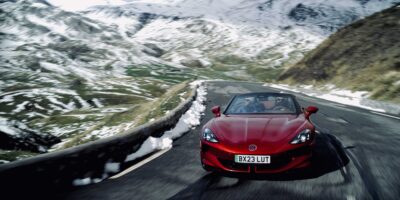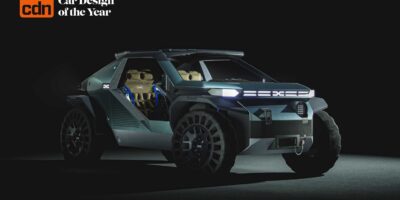The AA has discovered a report written by Highways England that highlights how long it takes to identify vehicle broken down in a live lane of an All Lane Running (ALR) motorway when Stationery Vehicle Detection (SVD) systems are not in place.
The report titled Stationary Vehicle Detection published in March 2016* states that using data for breakdown live lane incidents for the M25 J25-26 ALR scheme,‘reviewed CCTV footage to identify incidents where the event occurrence time could be recorded…our analysis found the average time…was 17 minutes and 1 second.’
According to Highways England’s own analysis, stopping in a live lane of an ALR motorway more than triples the danger when compared to a traditional motorway with a continuous hard shoulder:  ‘A stationary live lane obstruction creates a particular hazard during off-peak conditions (when flows are low and speeds are high) due to the increased severity associated with collisions involving large speed differentials. This is captured in the ALR generic hazard log as hazard H135: “vehicle stops in a running lane – off peakâ€. Compared to the D3M design used as the safety baseline, the assumption in the hazard log is that the H135 risk increases by 216%, making it the fourth highest scoring residual hazard.’
Within the report it also highlights that operation centres have a three-minute window to set signal changes, like red ‘X’, once a vehicle has stopped in a live lane: ‘Key Performance indicator to set signs and signals within 3 minutes of an incident being verified. Assuming that once a broken down vehicle (or other incident) has been detected on the network by any means, the corresponding actions required to set signs and signals take the same amount of
time regardless of the detection methods’.
The report from Highways England identifies that in ALR schemes where SVD technology does not exist, that more than a third (36%) of live lane breakdowns took more than 15 minutes to find, with the longest taking more than an hour to discover on CCTV.
Image taken from Highways England report:
Stationary Vehicle Detection
A recent Freedom of Information request by the AA to Highways England** also found that there are 135.1 miles of ALR in England, but only 24.2 miles are coved by SVD technology, both of which are on the M25 (J5-6 and J23-27).
However, when responding to the Transport Select Committee in September 2016***, the Government stated that “As Highways England advised the Committee at the hearing, it is committed to implementing measures to further improve the performance of All Lane Running, which includes the introduction of stationary vehicle detection to all All Lane Running sections.â€
The SVD for the M3 J2-4a will not be operational until 2021 and other schemes in development could be installed by 2022. Other schemes like the M4, the longest stretch of ALR, will use other emerging technology, but Highways England have not advised what this could be.
CCTV
The AA has also learnt that 7% of the CCTV overlooking the motorway network is on ALR schemes. The cameras being used are called ‘Pan, Tilt and Zoom’ (PTZ), meaning that the cameras can only look in one direction of the motorway at a time. For example, should the camera be looking southbound and an incident happen northbound, the camera won’t spot the issue until it faces the other way.
Edmund King, AA president says; “This is a truly shocking revelation and shows just how dangerous it can be breaking down in a live lane. This highlights why growing numbers of the public are justified in their safety concerns over the removal of the hard shoulder.
“Ultimately, until you are found by the camera you are a sitting duck.
“Taking three minutes to set the red ‘X’ is too long for someone in a broken-down vehicle to wait. Expecting someone to wait in a dangerous and life-threatening position for 20 minutes is simply inexcusable.
“The safer stationary vehicle detection technology should have been rolled out before any expansion of all lane running was even considered. We are now three years on since their fully throated commitment to installing stopped vehicle detection to all schemes but only 24 miles has the system in place.â€
King continues; “The use of cameras has been sold to drivers on the premise that there is 100% coverage of the motorway. That is only true if the camera is pointing in the direction you are travelling.
“This smoke and mirrors approach to the removal of the hard shoulder has gone on long enough. There have been too many incidents, too many near misses and too many excuses as to why promises have been bent or broken.
“We must stop removing the hard shoulder immediately and double the number of emergency refuge numbers already in place.â€
*Article Source www. TheAA.com








